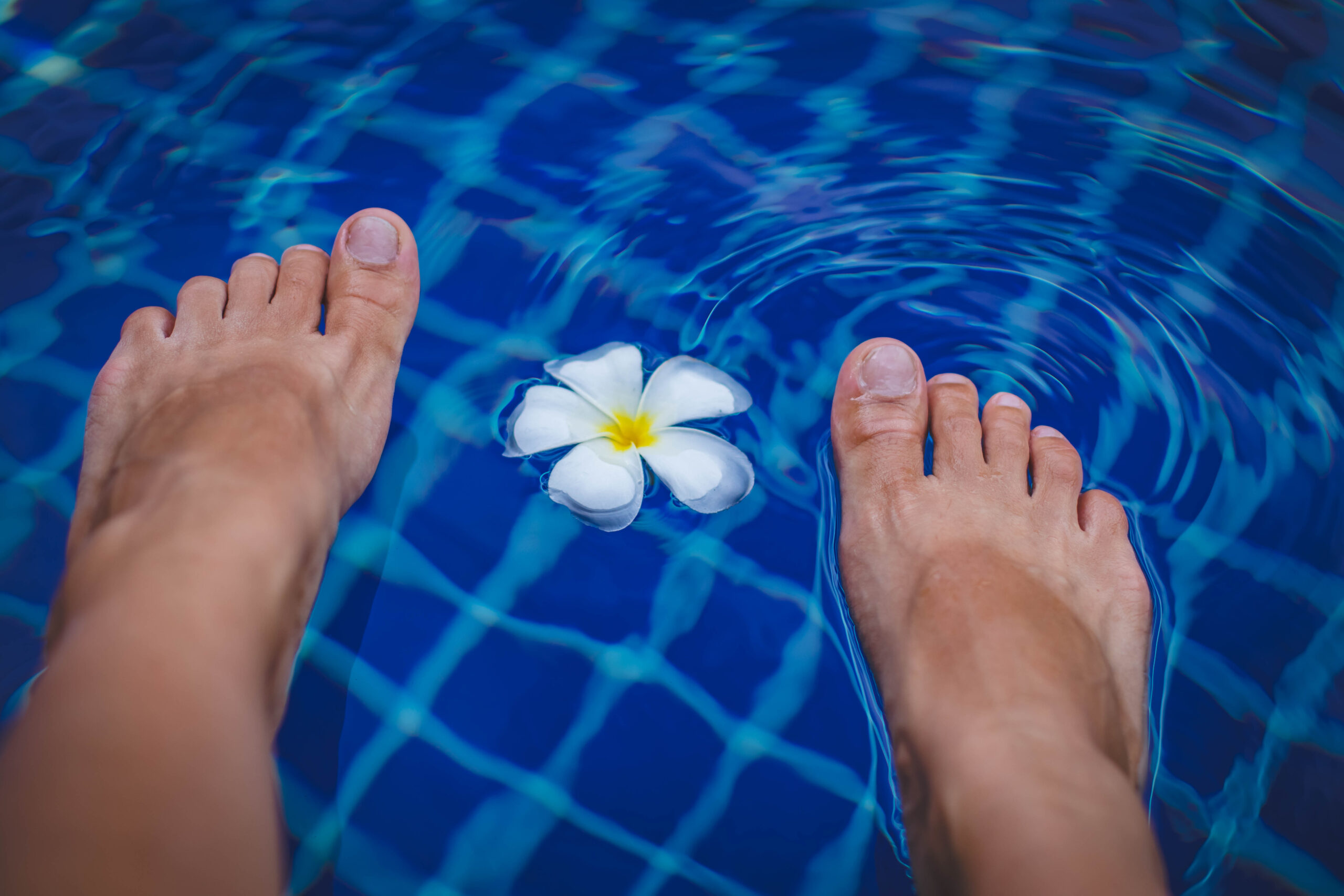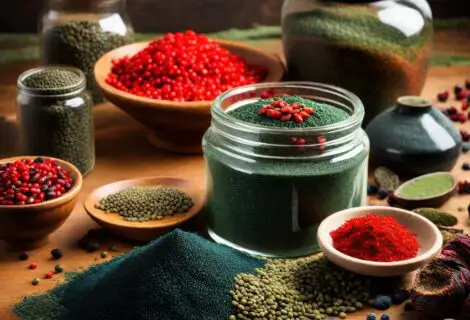10 Home Remedies for Athlete’s Foot
Introduction
Do you feel an itchy sensation between your toes or on the soles of your feet? Are you tired of constantly having to scratch that itch? Don’t worry, you’re not alone. Athlete’s foot is a common fungal infection, and fortunately, there are several home remedies that can help alleviate the symptoms. In this article, we will explore the causes, symptoms, and 10 home remedies for athlete’s foot.
What is Athlete’s Foot?
Athlete’s foot, also known as tinea pedis, is a fungal infection that affects the skin on the feet. It is caused by various types of fungi, including Trichophyton, Epidermophyton, and Microsporum. These fungi thrive in warm, moist environments, making them prevalent in locker rooms, public showers, and swimming pools.
Causes of Athlete’s Foot
The fungi responsible for athlete’s foot can easily spread from person to person through direct contact or by touching contaminated surfaces. The most common ways to contract the infection include: You may like this…11 Unique Uses for Listerine
- Walking barefoot in public areas like locker rooms and showers
- Sharing towels, socks, or shoes with an infected person
- Wearing damp or sweaty shoes for prolonged periods
Symptoms of Athlete’s Foot
Common symptoms of athlete’s foot include:
- Itching, stinging, or burning sensation between the toes or on the soles of the feet
- Peeling, cracking, or scaling skin
- Redness and inflammation
- Blisters that may ooze or become crusty
- Thick, discolored, or crumbly toenails (in severe cases)
When to see a doctor
While home remedies can be effective in treating mild cases of athlete’s foot, it’s important to consult a doctor if:
- The symptoms worsen or persist for more than two weeks
- You have diabetes or a weakened immune system
- You develop a bacterial infection, indicated by increased pain, swelling, and pus
Home Remedies for Athlete’s Foot
Here are some effective home remedies that can help alleviate the symptoms of athlete’s foot:
1: Apple Cider Vinegar
Apple cider vinegar has antifungal properties that can help fight the infection. Mix equal parts of water and apple cider vinegar, soak a cotton ball in the solution, and apply it to the affected area. Let it sit for 10 minutes before rinsing with warm water. Repeat this process twice daily for optimal results.
2: Tea Tree Oil
Tea tree oil is known for its powerful antifungal and antibacterial properties. Mix a few drops of tea tree oil with a carrier oil, such as coconut or olive oil, and apply it directly to the infected area. Leave it on for at least 15 minutes before rinsing with warm water. Do this twice daily for effective relief.
3: Garlic
Garlic contains allicin, a compound with antifungal properties. Crush a few cloves of garlic and apply the paste to the affected area. Leave it on for 20-30 minutes, then rinse with warm water. Repeat this process twice daily for best results.
4: Hydrogen Peroxide
Hydrogen peroxide can help kill the fungus responsible for athlete’s foot. Dilute 3% hydrogen peroxide with an equal amount of water and apply it to the infected area using a cotton ball. Allow it to air dry before putting on socks or shoes. Perform this treatment once daily.
5: Baking Soda
Baking soda can help neutralize foot odor and absorb moisture, creating an inhospitable environment for fungi. Mix 2 tablespoons of baking soda with enough water to form a paste, and apply it to the affected area. Let it dry for 15-20 minutes before rinsing with warm water. Repeat this process once daily.
6: Epsom Salt
Epsom salt can help soothe irritated skin and reduce inflammation. Add half a cup of Epsom salt to a basin of warm water and soak your feet for 15-20 minutes. Pat your feet dry and apply a moisturizer to prevent dryness. Do this once daily.
7: Cornstarch
Cornstarch can absorb moisture, making it difficult for the fungus to survive. Sprinkle cornstarch on your feet and in your shoes, especially between your toes, to help keep the area dry.
8: Yogurt
Yogurt contains live bacteria called probiotics, which can help fight off fungal infections. Apply plain, unsweetened yogurt to the infected area and let it dry. Rinse with warm water and pat your feet dry. Repeat this process once or twice daily.
9: Aloe Vera
Aloe vera has soothing, anti-inflammatory, and antifungal properties. Apply pure aloe vera gel to the affected area and let it dry. Rinse with warm water and pat your feet dry. Do this twice daily for best results.
10: Coconut Oil
Coconut oil contains lauric acid, which has antifungal properties. Apply a thin layer of coconut oil to the infected area and let it absorb into the skin. Repeat this process two to three times daily.
Prevention Tips
To prevent athlete’s foot from recurring, follow these tips:
- Keep your feet clean and dry
- Wear moisture-wicking socks and breathable shoes
- Change socks frequently, especially if they become damp
- Avoid walking barefoot in public areas
- Use antifungal powder or spray in your shoes
Conclusion
Athlete’s foot can be uncomfortable and persistent, but with proper care and the use of effective home remedies, you can alleviate the symptoms and prevent future infections. Remember to keep your feet clean, dry, and well-ventilated, and consult a doctor if your symptoms worsen or do not improve after trying home treatments.
We’d love to hear from you! Leave your comments, suggestions, or personal experiences in the comments section below. Also, don’t forget to share with family and friends who may find this info useful.
10K Training Guide: From Couch to Finish Line
FAQs
Q: How long does it take for athlete’s foot to go away?
A: The duration of athlete’s foot varies depending on the severity of the infection and the effectiveness of the treatment. With consistent home remedies and proper foot care, mild cases may resolve in one to two weeks. However, more severe cases may take longer to heal. Consult a doctor if symptoms persist or worsen after two weeks.
Q: Can I wear socks and shoes while treating athlete’s foot?
A: Yes, you can wear socks and shoes, but it’s essential to choose moisture-wicking socks and breathable shoes to prevent excessive moisture, which can worsen the infection. Make sure to change your socks frequently, especially if they become damp.
Q: Can athlete’s foot spread to other parts of the body?
A: Yes, athlete’s foot can spread to other parts of the body, such as the hands, groin, and nails. To minimize the risk of spreading the infection, avoid touching the affected area, wash your hands regularly, and do not share personal items like towels, socks, and shoes with others.
Q: How can I prevent athlete’s foot from recurring?
A: To prevent athlete’s foot from recurring, maintain proper foot hygiene, keep your feet clean and dry, wear moisture-wicking socks and breathable shoes, change your socks frequently, avoid walking barefoot in public areas, and use antifungal powder or spray in your shoes.
Q: Are over-the-counter antifungal creams effective for treating athlete’s foot?
A: Over-the-counter antifungal creams can be effective in treating athlete’s foot, especially for mild cases. They usually contain active ingredients like clotrimazole, miconazole, or terbinafine. Follow the instructions on the product packaging and consult a doctor if your symptoms do not improve after two weeks of consistent use.








